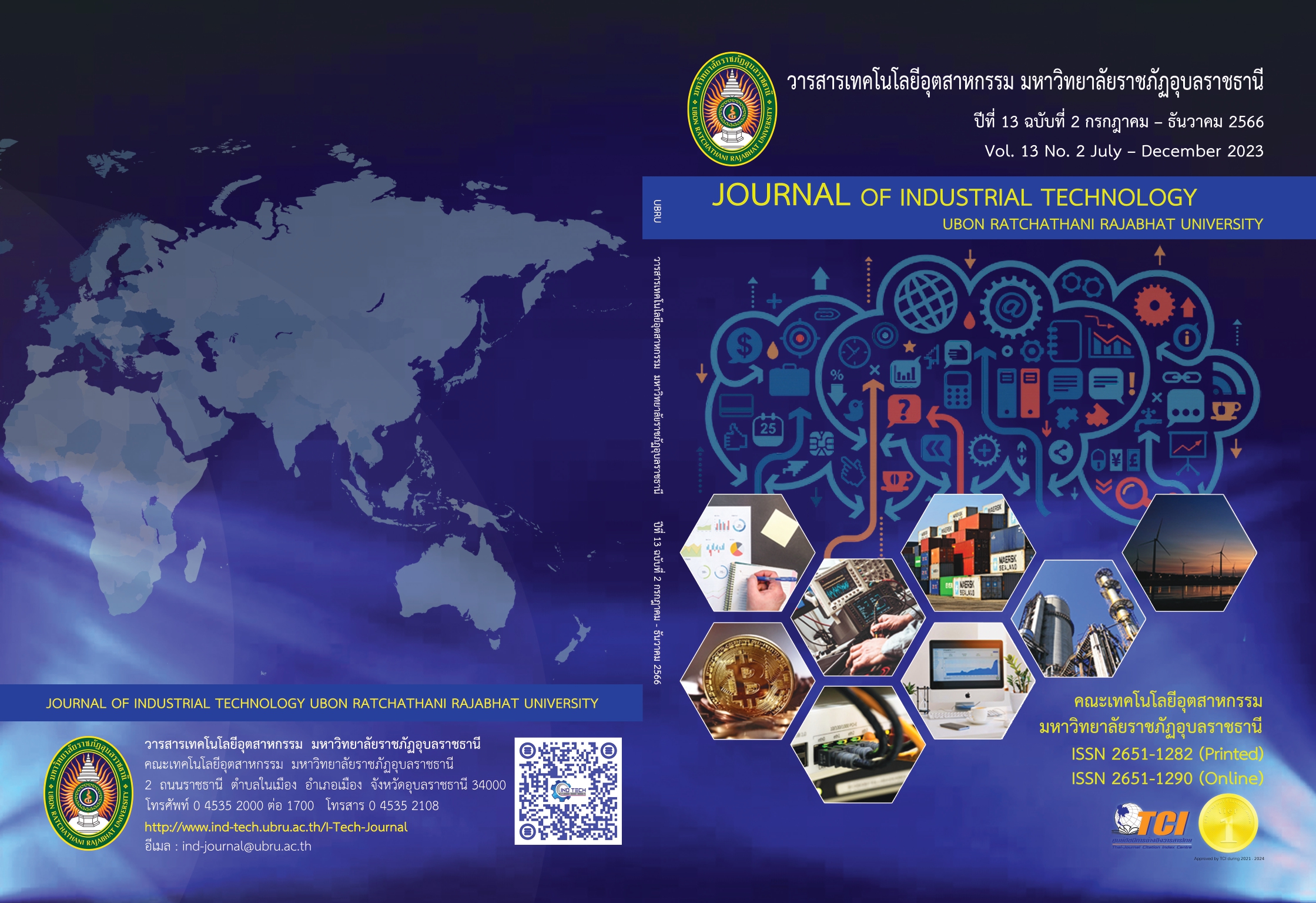A Balance Training Device with Visual Feedback
Main Article Content
Abstract
The main issue with stroke patients is that patients lose their ability to balance due to the loss of the ability to control the functions of the trunk and leg muscles and the loss of sensation. In rehabilitation of patients with balance training, patients receive voice feedback based on physiotherapists’ observations. This may lack accuracy and quantitative measures. Therefore, the purpose of the research project is to develop a balance training device with visual feedback. It consists of 2 sets: a sitting-balance feedback set and a standing-balance feedback set. Two load cells were installed in the sitting-balance feedback set. They were used to measure weight and monitor sitting balance. Four load cells were used in the standing-balance feedback set in order to detect foot bearing for both foot tip and heel. The weight values were sent to the display unit via RS485 communication. The display unit received weight values and displayed feedback on screen. This helped patients adjust themselves back to balance by observing visual feedback on the screen. The experimental results showed that the developed apparatus functioned properly as designed. The participants perceived the weight bearing visually during training. Moreover, after training, physical therapists obtained the training summary for analysis or comparison of performance before and after training.
Article Details

This work is licensed under a Creative Commons Attribution-NonCommercial-NoDerivatives 4.0 International License.
Articles published in Journal of Industrial Technology Ubon Ratchathani Rajabhat University both hard copy and electronically are belonged to the Journal.
References
Marsden J, Playford D, Day B. The vestibular control of balance after stroke. Journal of Neurology, Neurosurgery and Psychiatry. 2005; 76(5): 670-79.
Chen I, Cheng P, Chen C, Chen S, Chung C, Yeh T. Effects of balance training on hemiplegic stroke patients. Chang Gung Medical Journal. 2002; 25(9): 583-90.
Barclay-Goddard R, Stevenson T, Poluha W, Moffatt W, Taback S. Force platform feedback for standing balance training after stroke. Stroke. 2005; 36(2): 412–13.
Ramachandran R, Ramanna L, Ghasemzadeh H, Pradhan G, Jafari R, Prabhakaran B. Body sensor networks to evaluate standing balance: Interpreting muscular activities based on inertial sensors. In Borriello G, Petrioli C, editors. The 2nd International Workshop on Systems and Networking Support for Health Care and Assisted Living Environments; 2008 June 17; Colorado: Association for Computing Machinery; 2008. Article No. 4.
Kennedy M, Schmiedeler J, Crowell C, Villano M, Striegel A, Kuitse J. Enhanced feedback in balance rehabilitation using the Nintendo Wii balance board. In Shyu C, editor. The 13th IEEE International Conference on e-Health Networking Applications and Services (Healthcom): 2011 June 13-15; Missouri: IEEE; 2011. 162-68.
Schwenk M, Sabbagh M, Lin I, Morgan P, Grewal G, Mohler J, Coon D, Najafi B. Sensor-based balance training with motion feedback in people with mild cognitive impairment. Journal of Rehabilitation Research & Development; 2016; 53(6): 945-58.
Pellegrino L, Giannoni P, Marinelli L, Casadio M. Effects of continuous visual feedback during sitting balance training in chronic stroke survivors. Journal of NeuroEngineering and Rehabilitation. 2017; 14(1): Article No. 107.
Pramodhyakul N, Yangngam O, Satjapibantham N, Keawtep P. Effect of balance training by smartphone visual feedback on standing balance in patients with stroke: pilot study. Thai Journal of Physical Therapy. 2017; 39(1): 20 – 31. (in Thai)
Lee C, Sun T. Evaluation of postural stability based on a force plate and inertial sensor during static balance measurements. Journal of Physiological Anthropology. 2018; 37(1): Article No. 27.
Moreira G, de Lima E, Machado I, Cunha Loureiro A, Manffra E. The use of virtual reality rehabilitation for individuals post stroke. Journal Rehabilitation Therapy. 2019; 1(1): 21-7.
Forghany S, Nester C, Tyson S, Preece S, Jones R. Plantar pressure distribution in people with stroke and association with functional mobility. Journal of Rehabilitation Sciences & Research. 2019; 6(2): 80-5.

